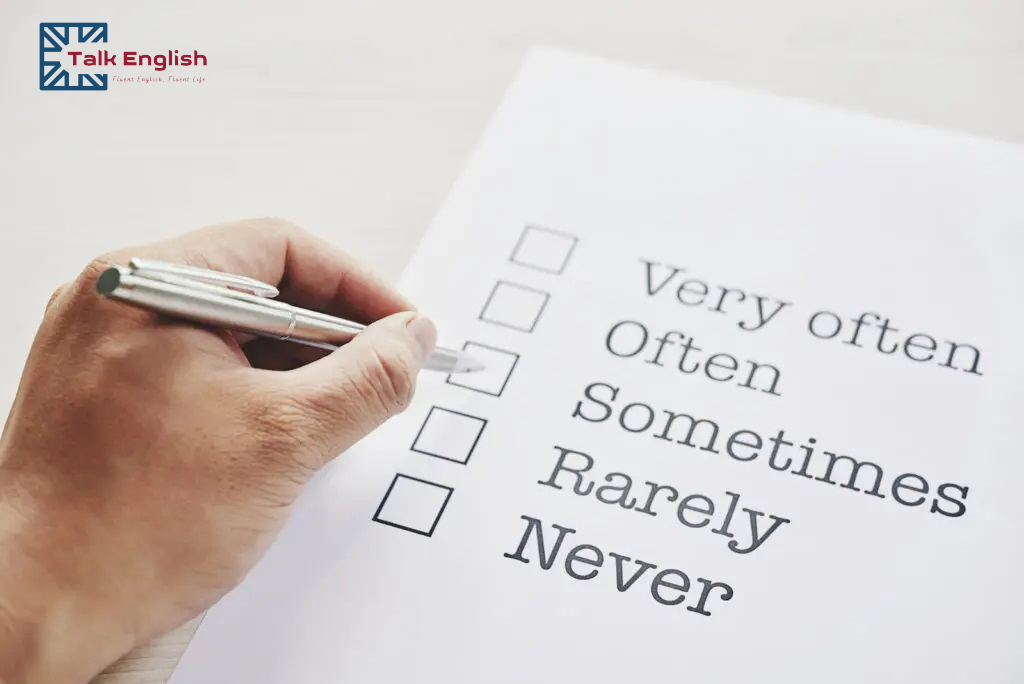Biết cách nói lịch sự là một phần quan trọng của việc học bất kỳ ngôn ngữ nào, và có nhiều cách khác nhau để làm điều này, phụ thuộc vào tình huống. Cho dù bạn cần từ chối lời mời, yêu cầu ai đó lặp lại điều gì đó, hay cần ai đó giải thích một cách rõ ràng hơn, thì bạn thường sẽ đạt được kết quả tốt hơn nếu bạn nói chuyện một cách lịch sự.
Nhưng khi có ai đó hỏi "Bạn có bất kỳ câu hỏi nào không?"
Điều này là một trong những điều phổ biến nhất mà bạn sẽ được hỏi trong một bài học tiếng Anh. Nếu bạn có câu hỏi, thì rất dễ trả lời — bạn chỉ cần nói "có" và đặt câu hỏi của bạn.
Nhưng nếu bạn không có, làm thế nào để nói "không" một cách lịch sự? Hôm nay, chúng tôi sẽ chỉ cho bạn năm cách để làm điều đó.
Body language and tone
But first, remember to keep your body language and tone of voice in mind, because it can sometimes be more important than the words you choose.
For example, even if you use a polite phrase to say “no,” you can still come off as rude if you look angry or speak with an angry tone of voice. But if you simply say “no” with a polite tone of voice and a friendly expression on your face, people won’t think you’re being rude.
So it's important to pay attention to not just what you say, but also how you say it.
And to make things even easier, let’s learn some polite ways to say “No, I don’t have any questions.”
English phrases for politely saying “no”
1. Nope.
“Nope” is the informal version of “no.” If you feel that saying “no” is too direct, you can say “nope” instead. It's very similar to saying "no", but sounds more casual.
Your teachers usually just expect a short response to “Do you have any questions?”, so saying “nope” is enough. Just remember to say it in a friendly way!
2. Not at the moment.
“Not at the moment” is another common response to “Do you have any questions?” Like “nope,” it is less direct than “no.”
“At the moment” means “now.” So “not at the moment” means “I don’t have any questions now (but I might have some later).”
You can also use this in other situations where you don't have any questions or have finished asking questions, like during a job interview.
3. I think I’m OK for now.
“I think I’m OK for now” is another way to say “I think I understand everything right now (but I may have questions later).”
You can say “I’m OK for now” in other situations, such as when you go to someone’s house and they offer you something to drink.
But, remember to say “for now” and not just “now.”
- “I’m OK now” means “I’m OK now (but I may not have been OK before).”
- “I’m OK for now” means “I’m OK for the time being.”
4. I’m good.
“I’m good” is another way to say “I’m OK.” You can use “thanks” afterwards to sound more polite.
“I’m good” means “I’m OK” or “I don’t need any help.” You can also use it in other situations. For example, at a restaurant:
5. Nope, but thanks for checking.
If you want to show appreciation to your tutor for taking the time to check if you have questions, you can do this by saying "No", “Nope” or “I’m good” followed by “But thanks for checking.”
Here’s how you might use this sentence in another situation, like with a customer service representative.
Your turn
We hope this post gave you some ideas about how you can politely respond to “Do you have any questions?” For practice, try to respond to the following question in three different ways:
Now make sure to practice using these expressions in real life!
Biết cách nói lịch sự là một phần quan trọng của việc học bất kỳ ngôn ngữ nào, và có nhiều cách khác nhau để làm điều này, phụ thuộc vào tình huống. Cho dù bạn cần từ chối lời mời, yêu cầu ai đó lặp lại điều gì đó, hay cần ai đó giải thích một cách rõ ràng hơn, thì bạn thường sẽ đạt được kết quả tốt hơn nếu bạn nói chuyện một cách lịch sự.
Nhưng khi có ai đó hỏi "Bạn có bất kỳ câu hỏi nào không?"
Điều này là một trong những điều phổ biến nhất mà bạn sẽ được hỏi trong một bài học tiếng Anh. Nếu bạn có câu hỏi, thì rất dễ trả lời — bạn chỉ cần nói "có" và đặt câu hỏi của bạn.
Nhưng nếu bạn không có, làm thế nào để nói "không" một cách lịch sự? Hôm nay, chúng tôi sẽ chỉ cho bạn năm cách để làm điều đó.



